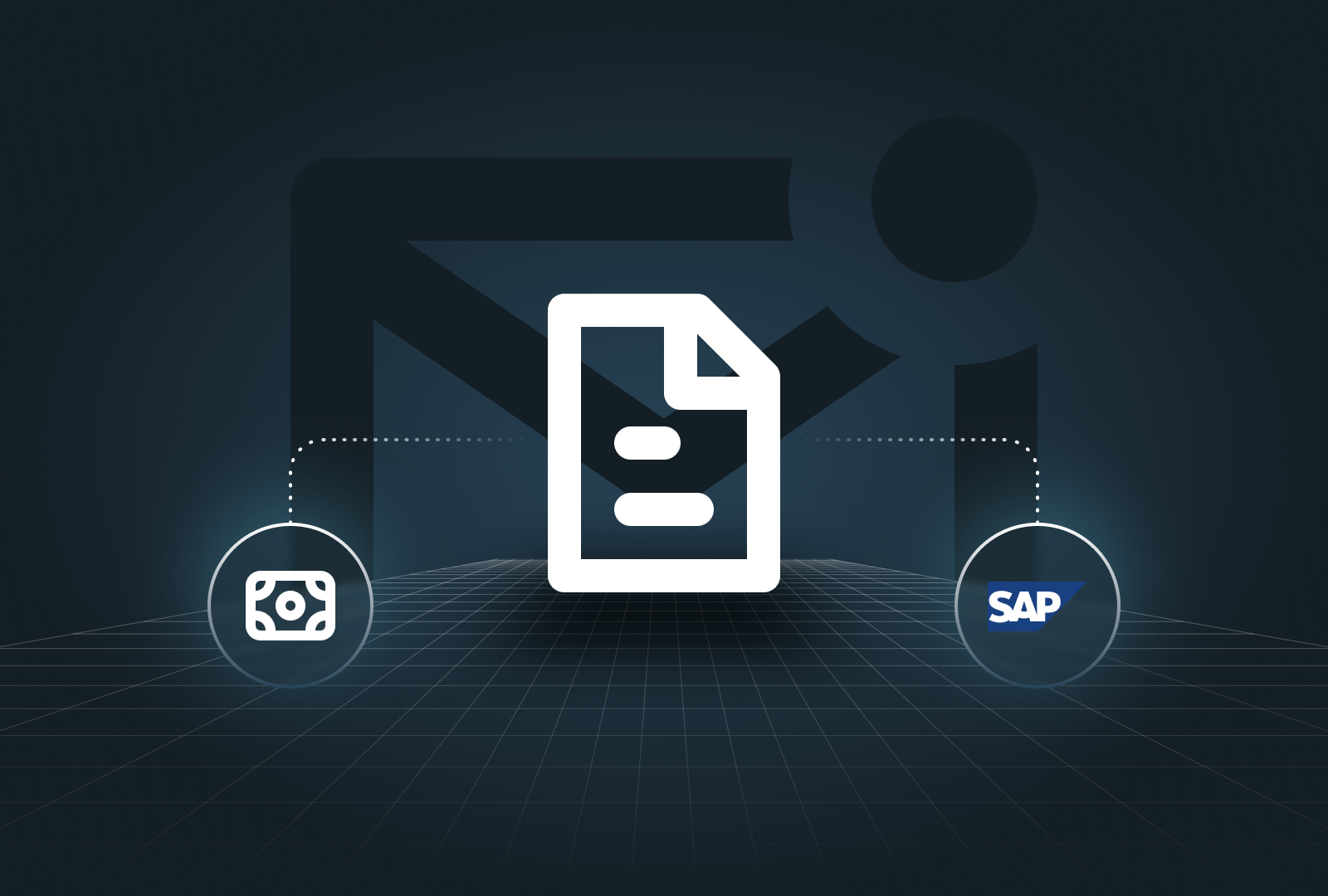In today’s fast-paced business environment, effective management of accounts payable (AP) and accounts receivable (AR) is crucial for maintaining positive cash flow and ensuring financial stability. AP and AR automation streamlines these processes by leveraging technology to enhance efficiency and accuracy. By automating tasks such as invoice processing and payment approvals, businesses can significantly reduce manual errors and improve overall financial management. This article explores the importance of AP and AR automation, highlighting its benefits, features, and best practices for successful implementation.
Understanding AP and AR automation
Definition of AP and AR automation
AP (Accounts Payable) and AR (Accounts Receivable) automation refer to the use of technology to streamline and enhance the management of incoming and outgoing payments. This process involves automating tasks such as invoice processing, payment approvals, and financial reporting, allowing businesses to minimize manual intervention and errors. By implementing automation solutions, companies can significantly improve their financial workflows.
Key differences between AP and AR processes
While both AP and AR are essential components of financial management, they serve distinct purposes. AP focuses on the money a company owes to its suppliers, while AR pertains to the money owed to the company by its customers. Understanding these differences is crucial for implementing effective automation solutions that address the unique needs of each process. Businesses often use accounts payable automation to optimize vendor payments while employing accounts receivable automation to enhance customer collections.
How automating AP and AR together improves financial visibility and decision-making
Integrating AP and AR automation offers a comprehensive view of a company's cash flow. By automating both processes, businesses can gain real-time visibility into their financial status, enabling better forecasting and informed decision-making. This synergy enhances overall financial management, providing a clear understanding of cash positions and potential future trends. For example, with enhanced data entry capabilities, organizations can better predict cash flow needs based on historical payment behaviors.
Key Benefits of AP and AR Automation for Your Business
Increased Accuracy and Reduced Manual Errors
One of the most significant benefits of automation is the reduction of human error. Manual data entry can lead to discrepancies in financial records, which can cause serious complications down the line. Automation decreases these errors, leading to more accurate records and fewer discrepancies. Businesses that implement automated accounts payable and automated accounts receivable processes can expect to see a notable improvement in their financial reporting and audit compliance.
Faster Payment Cycles and Improved Cash Flow
AP and AR automation significantly reduces payment processing times. Quicker invoice processing and payments enhance cash flow, reducing late fees and increasing working capital availability. By automating invoice approvals and customer collections, businesses can ensure timely payments. For example, with automation, invoices can be automatically matched with purchase orders, allowing for immediate payment once approvals are in place, thus improving overall cash flow management.
Enhanced Visibility Into Both Payables and Receivables
Real-time dashboards and reporting tools provide greater control and insight into both outgoing and incoming funds. This visibility allows businesses to track cash flow more effectively and make proactive financial decisions. For instance, an automated system can provide instant access to reports on Days Payable Outstanding (DPO) and Days Sales Outstanding (DSO), helping organizations gauge their liquidity and payment cycles accurately.
Strengthened Compliance and Risk Management
Automation ensures adherence to financial regulations and reduces the risk of fraud through secure, traceable transactions. Implementing robust automation solutions helps businesses maintain compliance with laws governing payment processing and data security. Automated systems often come with built-in compliance checks, ensuring that every transaction is logged and adheres to regulatory standards.
Improved Vendor and Customer Relationship
Faster payments to vendors and prompt collections from customers foster stronger business relationships. By streamlining the accounts payable and accounts receivable processes, companies can build trust and improve collaboration with their partners. A positive relationship with suppliers can lead to better terms and discounts, while prompt collections from customers enhance cash flow.
Key features of AP and AR automation tools
Automated invoicing and payment processing
Automation tools facilitate the generation of invoices and the processing of payments, significantly reducing the time spent on these tasks. Features such as automatic invoice creation from purchase orders and scheduled payments help ensure that accounts payable processes remain seamless and efficient.
Real-time data and reporting capabilities
Access to real-time data allows businesses to monitor their financial processes closely, ensuring timely decision-making and adjustments when necessary. Dashboards can highlight trends in cash flow management and other financial metrics, making it easier for businesses to react swiftly to changes.
Integration with ERP systems and accounting software
Effective automation solutions should seamlessly integrate with existing ERP systems and accounting software, enabling a cohesive flow of data across platforms. This integration minimizes the need for duplicate data entry and ensures that all financial information is consistent and accurate.
Workflow Customization and Approval Hierarchies
Automation tools offer customizable workflows that align with a company's unique processes, including defining approval hierarchies for payment processing. This feature ensures that all invoices are reviewed and approved by the appropriate personnel, further reducing the chances of errors.
Steps to Implement AP and AR Automation in Your Business
Conducting a Financial Process Audit
Evaluating current AP and AR processes is essential to identify inefficiencies and areas for improvement before automation. This audit lays the foundation for a successful transition to automated processes. Companies should look for bottlenecks in their current workflows and assess the effectiveness of their existing automation solutions.
Choosing the Right Software Solution
When selecting AP and AR automation software, look for scalability, ease of use, and support for future growth. The right software can significantly impact the success of your automation efforts. Ensure that the chosen software accommodates both accounts payable and accounts receivable needs, as well as integration with other financial systems.
Steps for Successful Implementation
A detailed implementation plan should outline the initial setup and testing phases, followed by system integration and rollout to ensure a smooth transition to automated processes. Key steps should include setting timelines for implementation, assigning responsibilities, and monitoring progress throughout the transition.
Staff Training and Ongoing Support
Training employees on the new system and ensuring continuous support is crucial for maintaining long-term success. This step helps teams adapt quickly and efficiently to the automated environment. Ongoing training sessions and support resources can empower employees to utilize the automation features effectively, maximizing the benefits of the system.
How Payflows Provides Seamless AP and AR Automation
Payflows offers advanced solutions for automating both AP and AR processes, providing ease of integration, enhanced visibility, and optimized cash flow. With features designed to meet the specific needs of businesses, Payflows stands out as a valuable partner in financial automation. The software's ability to centralize financial data ensures that companies can access all necessary information in one place, leading to better financial decision-making.
The future of automation in finance
AI and advanced analytics for predictive insights
The integration of AI and advanced analytics into automation solutions will drive predictive insights, allowing businesses to anticipate cash flow trends and make informed decisions. Companies can leverage data to create forecasts that are more accurate and responsive to market changes.
Automation trends shaping the future of AP and AR processes
Emerging trends, such as machine learning and blockchain technology, are set to revolutionize the way AP and AR processes are managed, enhancing security and efficiency. The adoption of receivable automation software will continue to grow, allowing for quicker and more secure transactions.
The evolution of financial workflows and decision-making with automation
As automation becomes more sophisticated, the financial workflows of businesses will evolve, leading to more streamlined processes and data-driven decision-making. Automation will empower organizations to not only manage their finances better but also develop strategic insights that can drive growth and profitability.
Measuring the Success of AP and AR Automation
Key Performance Indicators (KPIs) to Track
Essential KPIs to assess the effectiveness of automation include Days Payable Outstanding (DPO), Days Sales Outstanding (DSO), and error rates. Tracking these metrics will provide insights into the success of your automation efforts and help identify areas for further improvement.
Calculating the Return on Investment (ROI)
To measure the ROI of AP and AR automation, consider factors such as cost savings, reduced processing times, and improved cash flow. Understanding these impacts will help justify the investment in automation solutions. Companies can analyze the financial benefits gained from reduced labor costs and enhanced efficiency against the initial investment in automation software.
Conclusion
In conclusion, AP and AR automation offers numerous advantages for businesses seeking to enhance their financial processes. By automating these critical functions, companies can achieve greater accuracy, improve cash flow, and strengthen vendor and customer relationships. The key features of automation tools, such as real-time data access and seamless integration with existing systems, further enhance their effectiveness. As businesses look to the future, investing in automation solutions will not only improve operational efficiency but also provide valuable insights for strategic decision-making. With support from providers like Payflows, organizations can confidently embrace automation to drive growth and success.





.png)
.png)
.png)





.png)



